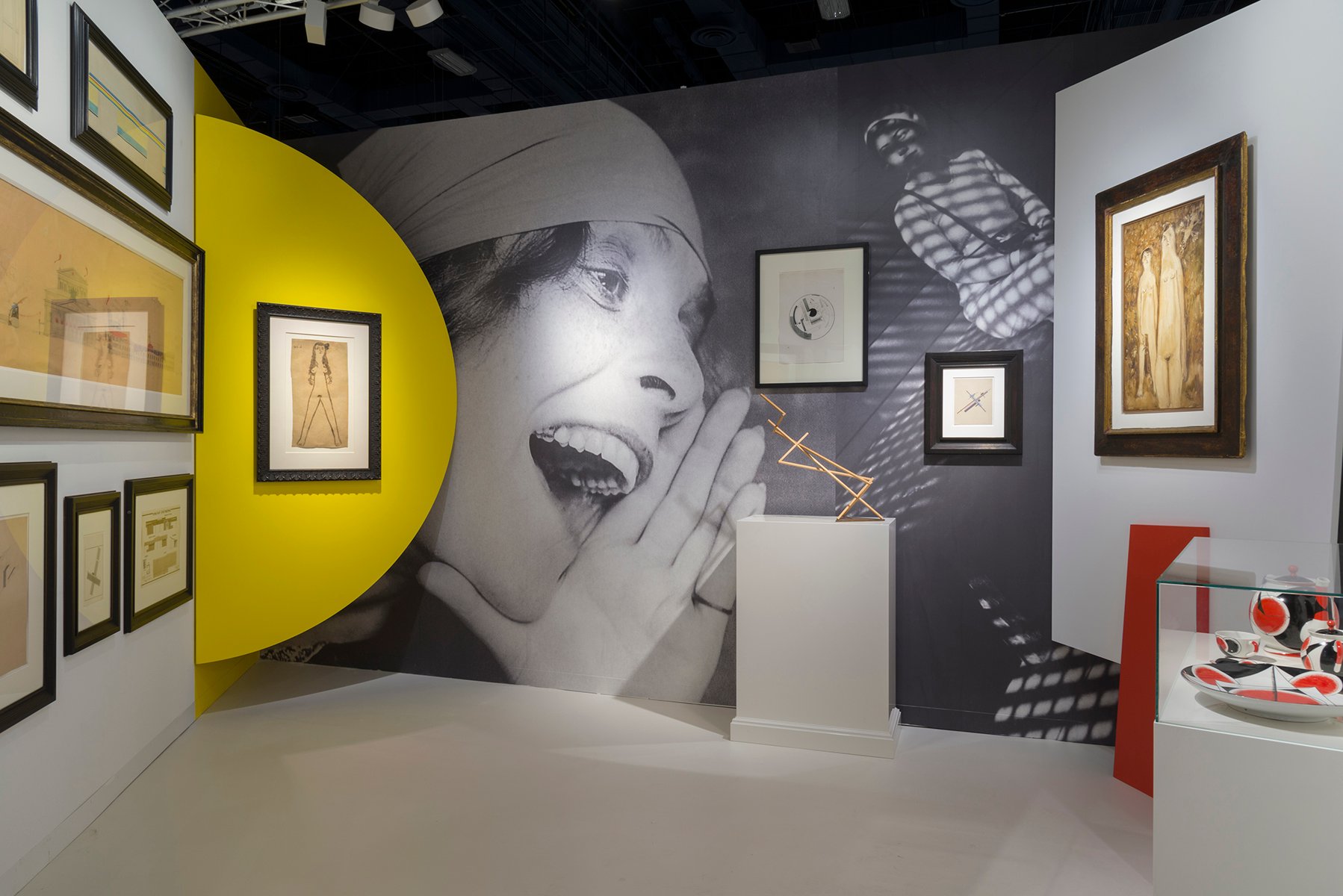
On the eve of the 100th anniversary of the Russian Revolution, and at a moment of massive political upheaval in the US and in Europe, Switzerland’s Galerie Gmurzynska offers a bold booth at Art Basel in Miami Beach that looks to the Russian avant-garde. There’s a wealth of works on view from masters like Kazimir Malevich, Alexander Rodchenko, Varvara Stepanova, Sonia Delaunay, Lyubov Popova, and more.
Sir Norman Rosenthal, the curator who co-organized the presentation, was sitting at the booth today, talking to a visitor. “If you bought the entire booth—which I’m sure could be arranged—you would at one stroke have the basis for a museum of the Russian avant-garde.”
Galerie Gmurzynska’s booth at Art Basel in Miami Beach 2016. Courtesy Galerie Gmurzynska.
The booth’s striking design, handled by Claude Picasso, the artist’s son, features wallpaper that draws on period imagery and from some of the works in the booth itself. Arranging the works against the unusual backdrop had its challenges, however. The gallery team was working up until Wednesday morning, just before the 11:00 a.m. VIP preview, partner Mathias Rastorfer pointed out. “You can’t do such detailed work in a model, you have to do it in the booth itself,” he said. The gallery is known for dramatic installations at Art Basel, but, Rastorfer said, the wallpaper made this one the most complicated they’ve mounted at the fair so far.
One of the remarkable aspects of this period, Rosenthal and Rastorfer were eager to mention, was the prominent role female artists played. “Suddenly, in Russia of all places, they became the equals of men,” Rosenthal said, contrasting it to the whole of the rest of art history. Rastorfer concurred: “America is not quite there yet.”
Alexander Rodchenko, Nurse. Courtesy Galerie Gmurzynska.
Behind him was a wall devoted to works by Alexander Rodchenko and Varvara Stepanova. “They were an item,” Rosenthal said with a grin. Rastorfer in particular pointed out two small Stephanova paintings that visualized the avant-garde poetry of the day, one of them translating the verbal into a bold, graphic, abstract design.
“There’s a hunger for the revolutionary spirit of that time,” Rastorfer said, “when art was closely linked with every aspect of everyday life. Today, we are in the ivory tower.”
Galerie Gmurzynska’s booth at Art Basel in Miami Beach 2016. Courtesy Galerie Gmurzynska.
The booth’s dramatic presentation, by contrast, harkens back to a period of integration of visual art, architecture, poetry, theater, and advertising, with a wide selection of architectural drawings, including for a grand tower designed by Vladimir Tatlin that was to eclipse the Eiffel Tower, and would serve as a radio broadcasting station to put forth, as Rosenthal called it, “the optimistic message of Communism.”
But the show isn’t short on strictly aesthetic revolution, either. Pointing to Paul Mansourov’s 1922 painting Black on Black, a mischievous Rosenthal quipped, “Ad Reinhardt, eat your heart out.”